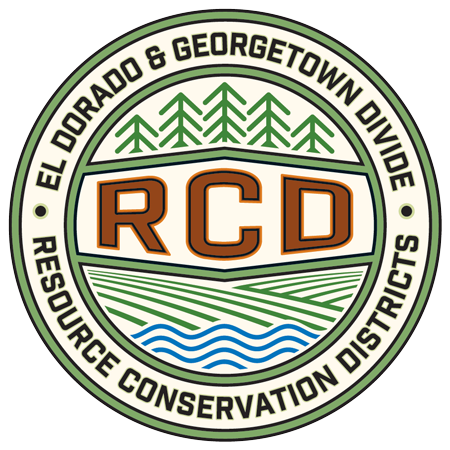Coloma Lotus Fuels Reduction Project
El Dorado County Fire Safe Council (EDCFSC) and the El Dorado Resource Conservation District (RCD) are teaming up for a project called the Coloma Lotus Fuels Reduction Project. This project is a fuels reduction project that will help to reduce fire risk and conserve our natural resources.
Below you will find information about the project and resources for landowners.
Downloads
Coloma Lotus Fuels Reduction - Agreement
Coloma Lotus Fuels Reduction Project - Right Of Entry
Coloma Lotus Fuels Reduction Project - Treatments and FAQ Download
Map Downloads
Coloma Lotus Treatment Area Map - Click for PDF Download
CAL FIRE Grant Project Fuel Reduction for Critical Roads – Project Vegetation Treatment
The Georgetown Divide Resource Conservation District (RCD) staff is managing the Project work, which one or more vegetation contractors will complete after a competitive bid process. Vegetation treatments may include mechanical and hand tools to complete the vegetation work described below. Fuel reduction will target the removal of smaller diameter trees (less than 8 inches diameter at breast height, or dbh) and ladder fuels, and will create horizontal spacing of residual trees and/or canopy.
Performance measures for the Project vegetation treatment (i.e. – prescription) are as follows:
Process trees up to 8 inches dbh and brush to a height from ground level not to exceed 4 inches, such that the vegetation is cut or broken into small pieces, generally no greater than 16 inches in length. A certain amount of secondary processing may be necessary to eliminate larger pieces of fuel.
Trees should be spaced approximately 20 feet x 20 feet between their trunks.
All trees not removed will be limbed at no less than 12 feet above the ground while retaining 33% minimum crown for the health of the tree.
Brush cover should be reduced by creating a mosaic of treated and untreated shrubs. A minimum of 90% of the shrubs should be treated with 10% left intact for wildlife habitat.
No landscape or ornamental trees or shrubs will be treated.
Any vegetation removed should be cut to a maximum of 4 inches in height.
No individual pieces of processed material should be longer than 18 inches in length.
All downed oak limbs and logs greater than 4” diameter shall be cut into “biofuel” lengths of 4’and stacked where private landowner of parcel where work is being performed can efficiently be removed later.
All cut vegetation will be kept within the Project work boundaries. Any cut vegetation falling into ditches, roads, road banks, trails, or adjacent units should promptly be removed by the contractor.
Trees growing over the roadway will be pruned to a height of 16 feet from the ground (while maintaining a minimum 33 percent live crown) to allow for fire equipment access.
No treatments using heavy machinery (e.g., masticators, tractors, or chippers) will be implemented on slopes greater than 45 percent.
Broadcast or pile burning is not allowed by contractors.
Should any sensitive resources be found during project implementation, the area should be avoided until the appropriate agencies review the situation.
Heavy equipment shall not be used under saturated soil conditions (see Forest Practice Regulations 895.1).
Frequently Asked Questions
How were the roads and project area selected for the roadside work?
The 18 access roads were included in the grant application because they serve the greatest population of users and provide the most value to the community in terms of people served by the cost of the work.
What Happens to the cut material (small trees, limbs, and brush)?
Chipping or mastication will leave the material on-site in a mulch form. The mulch is good for limiting regrowth, cycling nutrients back to the soil, trapping moisture in the soil, and limiting fire spread. Cut wood too large for chipping or mastication will be left on site to be removed by the property owner.
What if my neighbors don’t want to participate? Will my property still be included?
Involvement by less than 100% of the property owners of a road segment or area will not exclude an area, but if the purpose of the grant can’t be met with the remaining, adjustments may be necessary.
I have a few bushes along the road I want to keep, and I have a special tree that is less than 8 inches dbh (dbh = diameter at breast height) that I also don’t want to be removed. How do I ensure it isn’t cut so I can still participate?
The RCD project staff will designate (by flagging) the treatment areas in the next few months. Some limited adjustments may be made for property owners who want to be more selective about vegetation removal and they will be provided flagging by the CLFSC to use to identify the specific requests for select trees or shrubs not to be removed. It is important to remember that the prescription is designed to reduce fire activity and provide lasting benefits to you and your neighbors, and significant deviation from the project vegetation treatment (see above) could nullify the intended benefits of the work and exclude your property from participation. Landowners will be notified if a property would be removed from consideration due to an abundance of exclusions or exceptions to treatment

